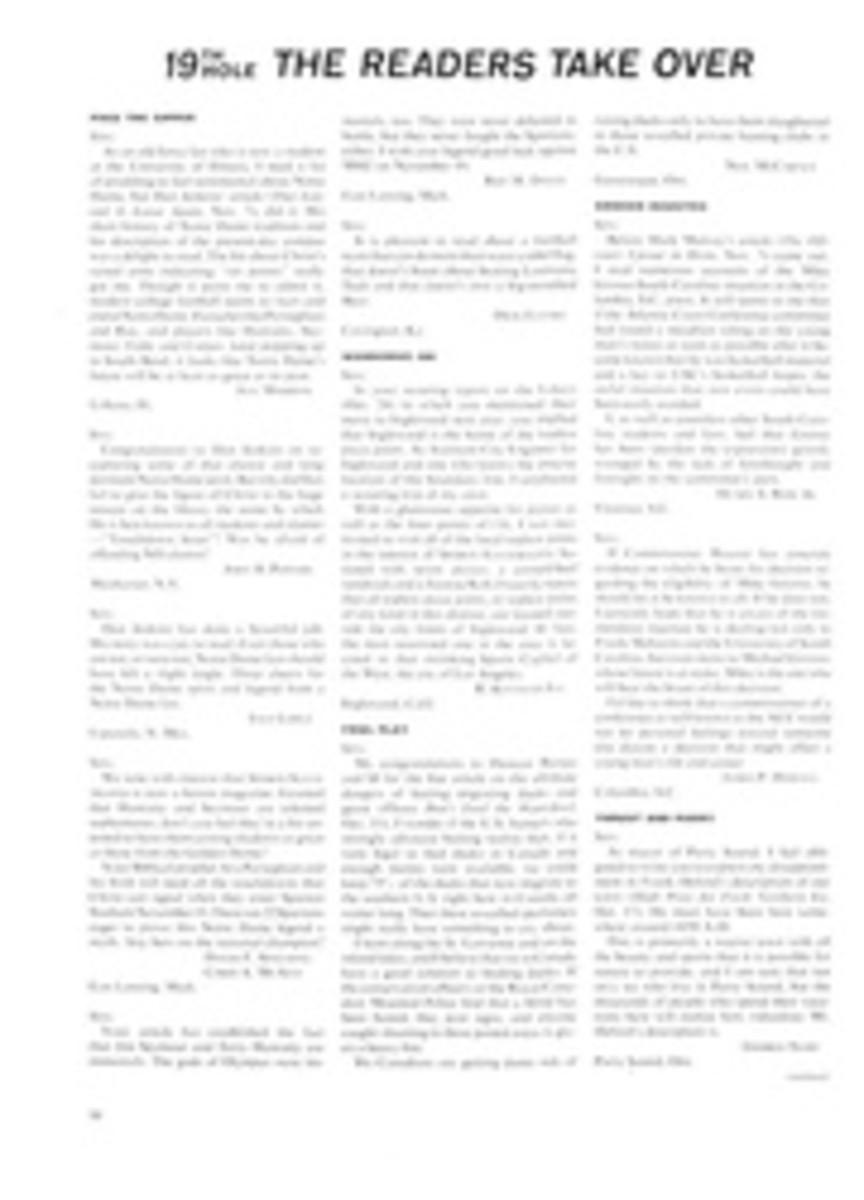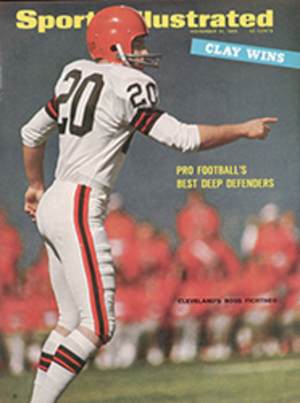
PEOPLE
Who is Harry Walker? Students at a small college near Pittsburgh asked 540 people on campus and around town that question. He was identified as a member of the President's Cabinet, a nightclub comedian, a test pilot, the governor of New York, the governor of Alabama, a fish-and-game warden, a postmaster, a segregationist, mayor of New York, an American Legion commander, a union leader, head of the Communist party, a movie star, an astronaut, a rock 'n' roll singer, a TV announcer, an evangelist, a football player end a Civil War general. Only 42% of those asked about Walker by students at Indiana University of Pennsylvania correctly identified him as manager of the Pittsburgh Pirates, who finished three games back of the pennant-winning Dodgers. Now, who is Walter Alston?
Featuring such paintings as Shea Stadium at Night, Ernie Barnes, for five years a lineman in the NFL and AFL, is having his first one-man show at New York's Grand Central gallery. An art major at North Carolina College, he didn't turn pro in that field until 1964. It was then that someone offered $25,000 for his first major work, The Bench (below), which had been exhibited in a Denver haberdashery. He turned the offer down "because I want to save the painting." Since then he has had pictures commissioned by such celebrities as Actor Jack Palance and Jets Owner Sonny Werblin. "I paint football subjects almost exclusively," says Barnes, "because that is what I know and understand best. Anyone in art should paint the things they know about and can grasp." Now within Barnes' reach: more $25,000 offers.
Just in case, George Hamilton has signed up for some target practice. He will spend this weekend shooting pheasants in Enzesfeld, Austria.
One of the most famous sports figures in Irish history, John Mary Lynch, won another prize last week. Now 49, the Irish hurling and football star was elected prime minister. He was the recipient of six successive All-Ireland medals, five of them for his achievements in hurling and one for Gaelic football. An active player until 1952, Lynch has not lost his feel for sport. Two years ago, when he was the government's Minister for Industry and Commerce, he was discovered airing damp jerseys by a coal fire in a Blackpool locker room.
Shortly before the election Charles Percy, the Republican candidate for the Senate from Illinois, told a sports rally: "We're down to the ninth inning with the ball on the five-yard line." He won anyway. So did other politicians with a sports line. Elected were: Ronald Reagan, who played George Gipp in the movie Knute Rockne—All American, to the governorship of California, in spite of one campaign slogan that went "I won one for the Gipper"; Bob Mathias, two-time Olympic decathlon champion, to the House of Representatives from California's 18th district; Clyde Lovellette, onetime NBA All-Star and fast-draw hobbyist, as sheriff of Vigo (Ind.) County; Bob St. Clair, former 49er tackle, as supervisor of San Mateo (Calif.) County; Wilmer (Vinegar Bend) Mizell, pitcher for the 1960 World Series-winning Pirates, as commissioner of Davidson (N.C.) County; Peter F. Schabarum, fullback at Cal in the '40s, to the California House of Representatives; Jim Beatty, the first man to run a sub-four-minute mile indoors, to the North Carolina House; and Tom Gola, recently a New York Knick, to the Pennsylvania House. "Sure, my name helped," said Gola. "But my name wasn't bought, it was earned."
The winner of this year's Nobel Prize for Chemistry, Robert S. Mulliken, has spent his life doing theoretical studies on molecules. Among other things, he helped develop the A-bomb. But one of his concerns now is America's penchant for "an environment of cement. I do not understand it," he says. "So much of our scenery is being torn up by bulldozers and flattened out. In Chicago I long for some hills. I have one consolation, though. A hundred years from now, if people become more sensible, it wouldn't be impossible to recreate some of the natural scenery—the brooks and hills. They wouldn't be quite natural, but nature would take over after a while. In 1948, after the war, I was interested to see how the wild flowers grew up in certain areas of London that had been badly bombed. If nature is given its chance, it will do things."
Last week at the Elysée Palace Charles de Gaulle had his own kind of field day. Never before noted for his athletic interests, he invited 60 of France's past and present sports stars to lunch and decorated six of them with the Legion of Honor. He bussed and bemedaled Tour de France winner Jacques Anquetil (below), Rugby Star Michel Crauste, Skater Alain Cal-mat, Skier Guy Périllat, Runner Michel Jazy and Track and Field Captain Jocelyn Delecour, "Not only are you very likable," said the beaming general, "you are examples of physical courage and character. Each time that you appear, you spread the good name and prestige of France in the most human of fields." De Gaulle surprised the athletes with his sports knowledge. He talked to Périllat about the synthetic "frogman's skins" that the French skiers had tried at Portillo to reduce wind resistance, and was overheard saying to a prewar French track star: "Ah, Monsieur Ladoum√®gue, I still remember your 1,500-meter world record in 1930, 3:49.2. What an exploit that was! And your mile record in 1931, 4:09.2. Admirable!" De Gaulle sounded like a track nut.
PHOTO
ILLUSTRATION

